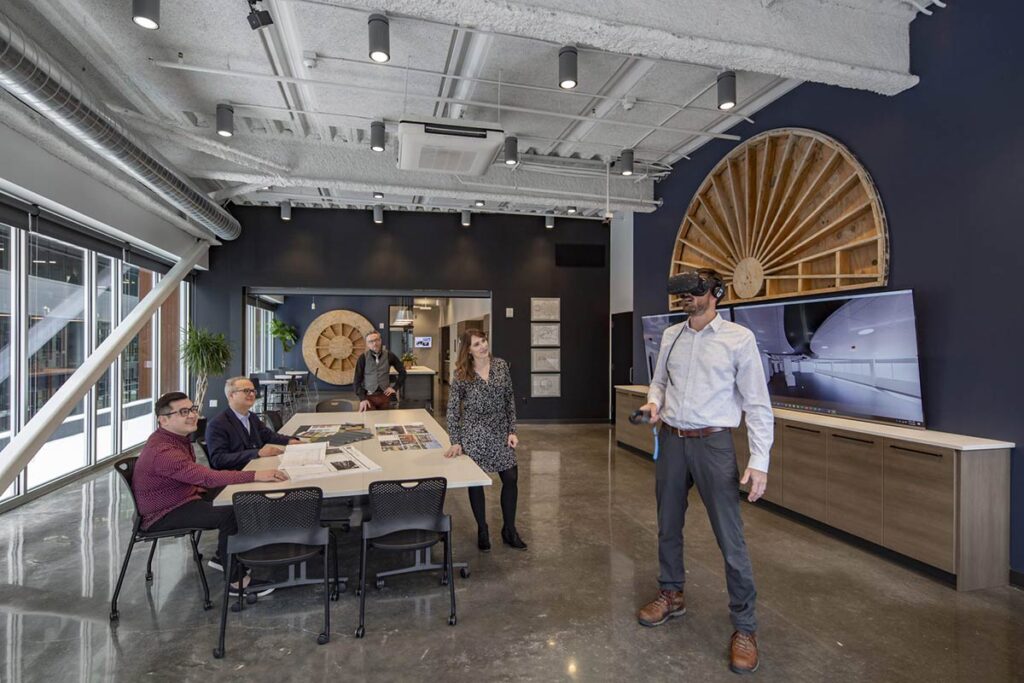THE FUTURE IS HERE, AND THE POSSIBILITIES PROPOSED BY VR ARE ELECTRIC.
In architecture, the process of Design Visualization involves creating two-dimensional and three-dimensional images that demonstrate a proposed architectural design (this includes virtual reality, 3D renderings, 360 photos, etc.).
Virtual Reality, or VR, has boomed within the architectural industry. With the ability to clearly present a project to clients, it now also serves as an integral part of the design process. Designers can use it to check how their work functions in the “real world” and proposed architectural visualizations can represent anything the client desires – scale, color, textures, interior furnishings – all of which help the client reach a shared understanding with the designer.
For many clients, a three-dimensional model is the most convincing tool to show what a finished project will look like. Virtual representation is what allows them to fully imagine their project as a real space.
This technology is transforming the design industry, and its opportunities only continue to grow – VR and client interaction is just one part of design visualization.
In our upcoming July eZine, we delve further into the possibilities of Architectural Design Visualization, the benefits of designing in a virtual world, and what we foresee as the future of the industry as virtual reality.











